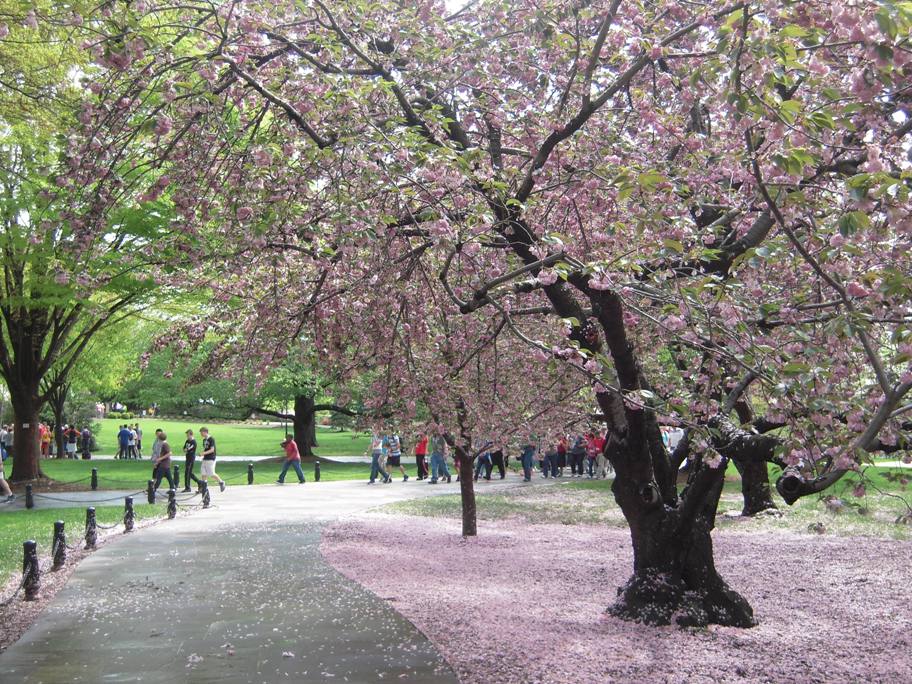 When someone mentions cherry trees in the Washington, D.C. region, the popular Yoshino cherry trees (Prunus species) surrounding the Tidal Basin are the first to come to mind. Just over the Potomac River, however, the Arlington National Cemetery Memorial Arboretum offers another great option for enjoying seasonally blooming cherry trees. Throughout the cemetery’s 624 acres, 417 cherry trees brighten overcast April days and bring May cheer — and one species even delivers a second bloom in November.
When someone mentions cherry trees in the Washington, D.C. region, the popular Yoshino cherry trees (Prunus species) surrounding the Tidal Basin are the first to come to mind. Just over the Potomac River, however, the Arlington National Cemetery Memorial Arboretum offers another great option for enjoying seasonally blooming cherry trees. Throughout the cemetery’s 624 acres, 417 cherry trees brighten overcast April days and bring May cheer — and one species even delivers a second bloom in November.
As at the Tidal Basin, Yoshino is our most common cherry tree. These trees surround the Confederate Memorial, and one old specimen graces Section 37, across from the Memorial Amphitheater.
Another welcome spring sight is the spectacular species of Prunus subhirtella pendula, or weeping Higan cherry. In the photo on the right, it drapes the corner of Porter and Grant Drives with its bark darkened by a recent rain.
 A vase-shaped cultivar of P. subhirtella "autumnalis" is aptly named for its repeat bloom performance in the fall. Look for a small grove of autumnalis in Section 45, within eyesight of the JFK gravesite, and along the steep steps of Crook Walk. Though not nearly as spectacular as the spring blooms, their fall and sometimes winter season color can create quite a stir.
A vase-shaped cultivar of P. subhirtella "autumnalis" is aptly named for its repeat bloom performance in the fall. Look for a small grove of autumnalis in Section 45, within eyesight of the JFK gravesite, and along the steep steps of Crook Walk. Though not nearly as spectacular as the spring blooms, their fall and sometimes winter season color can create quite a stir.
Near Woodhull Memorial Flagstaff in Section 35, deep-pink, double flowers of Prunus serrulata "Kwanzan" cover the tree in early May (as seen in the photo to the left). Strong winds blow the double blossoms onto the sidewalk, carpeting the ground below.
The arboretum is home to a native species of cherry tree, Prunus serotin, more commonly known as black cherry. Forty-eight of these less ornamental native cherry trees are scattered through the cemetery. They support the cecropia moth and tiger swallowtail butterfly, as well as the disdained eastern tent caterpillar. A well-known Delaware entomologist suggests that “if you can learn to tolerate a tent [caterpillar] or two in the spring, your cherries will provide valuable bird food all summer long.” Sounds like great advice.
We hope you will enjoy our arboretum’s diverse collection of cherry trees, both for their revered beautiful flowers and their ability to provide an important source of food for wildlife.
Photos by Kelly Wilson, Arlington National Cemetery